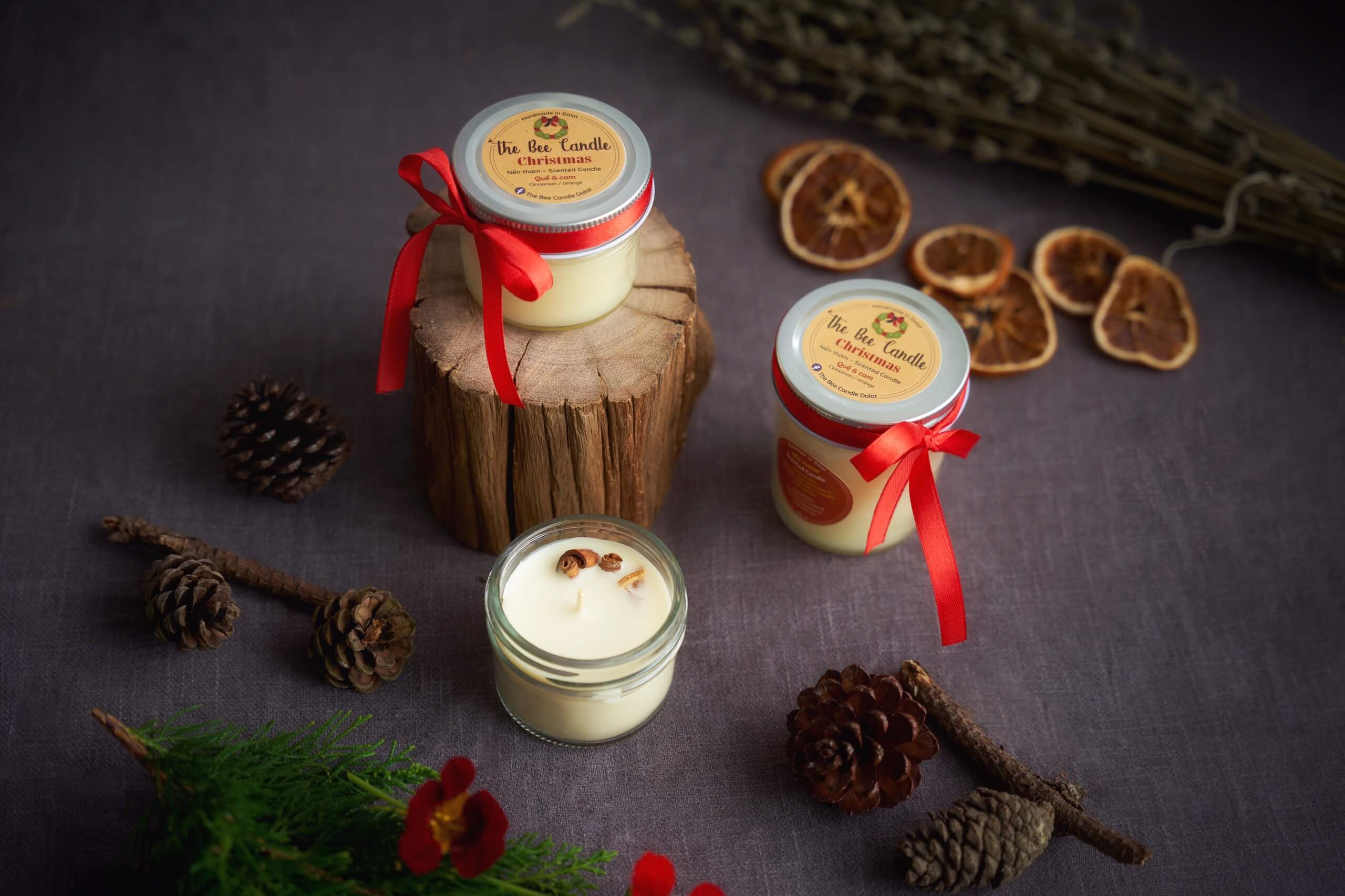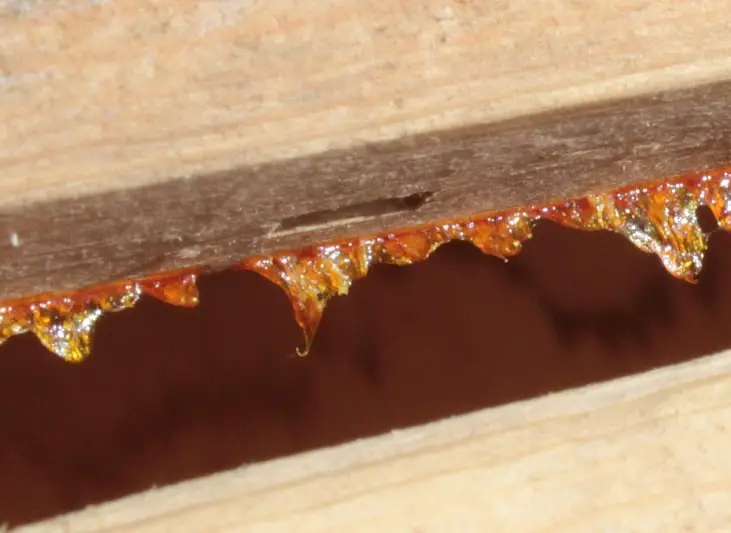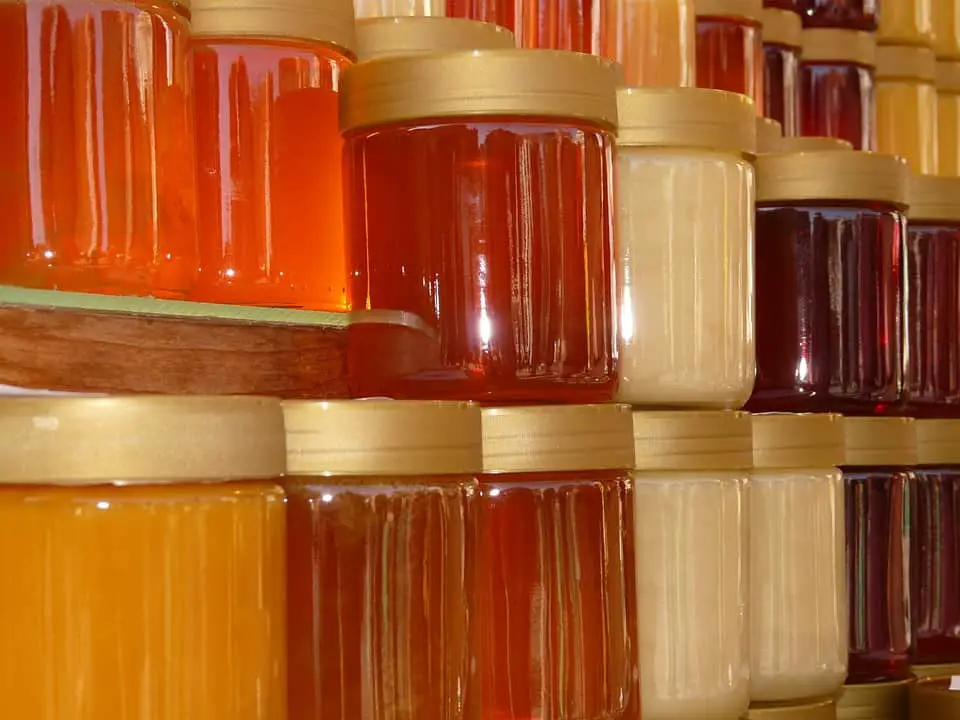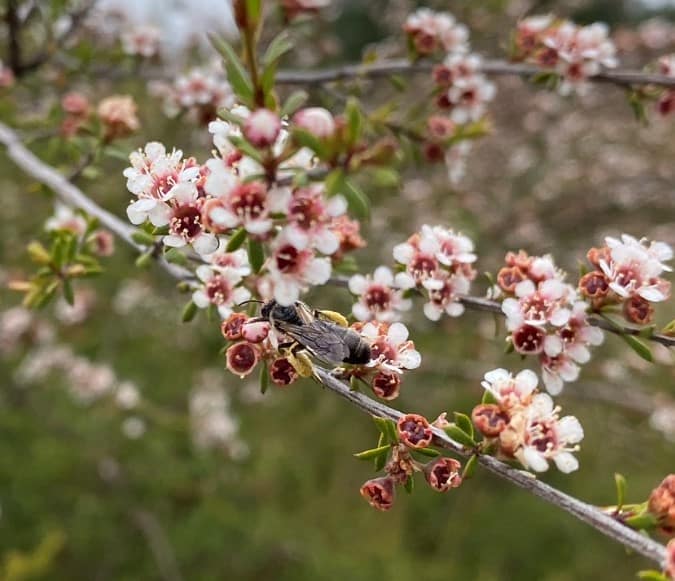Health Benefits of Beeswax
Everything you should know about beeswax
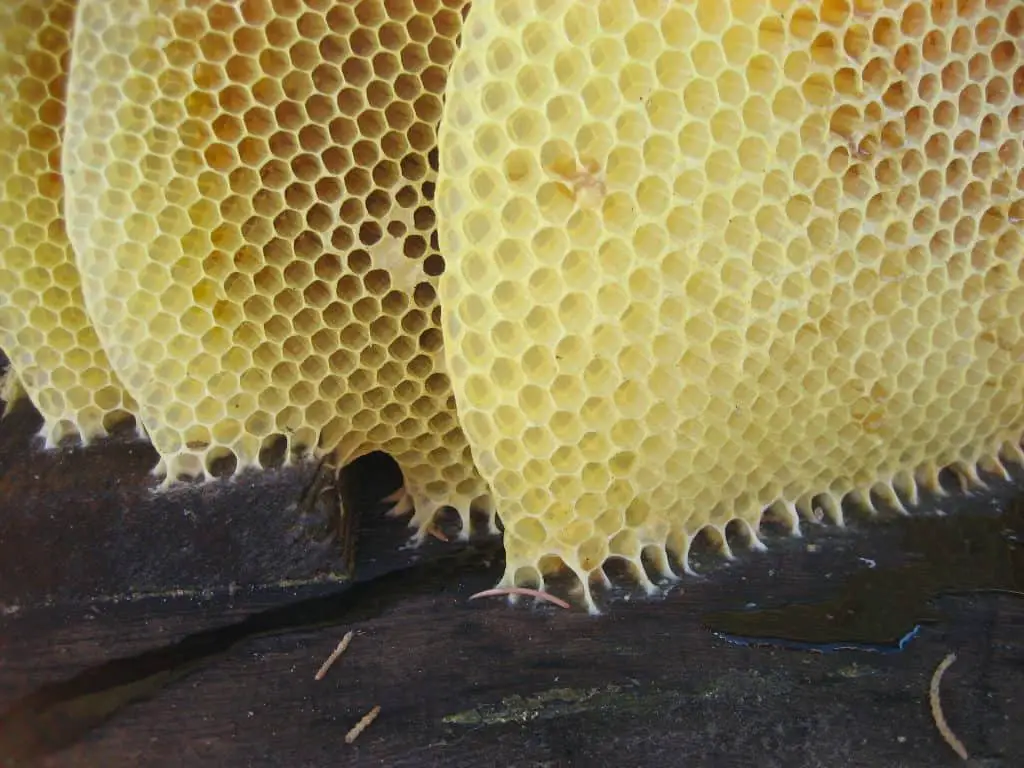
Beeswax in its natural form of honeycomb in a bee hive.
Beeswax is an essential product of a beehive that we often do not link directly to bees.
The wax is used for combs in the hives, where bees store the surplus of honey and pollen and raise their offspring.
Beeswax is the natural building material for honeycombs. The flexible and at the same time stable material is just ideal for its purpose.
How do bees build the honeycomb?
The worker bees of most bee races start with the wax building task once they are 12 days old.
The building process of the honeycomb cannot be done by a single bee.
Therefore, a bunch of bees get together for the building process.
Their bodies produce about eight little flakes of wax, which are pressed through the eight adenoids at the sides of their bodies and then chewed.
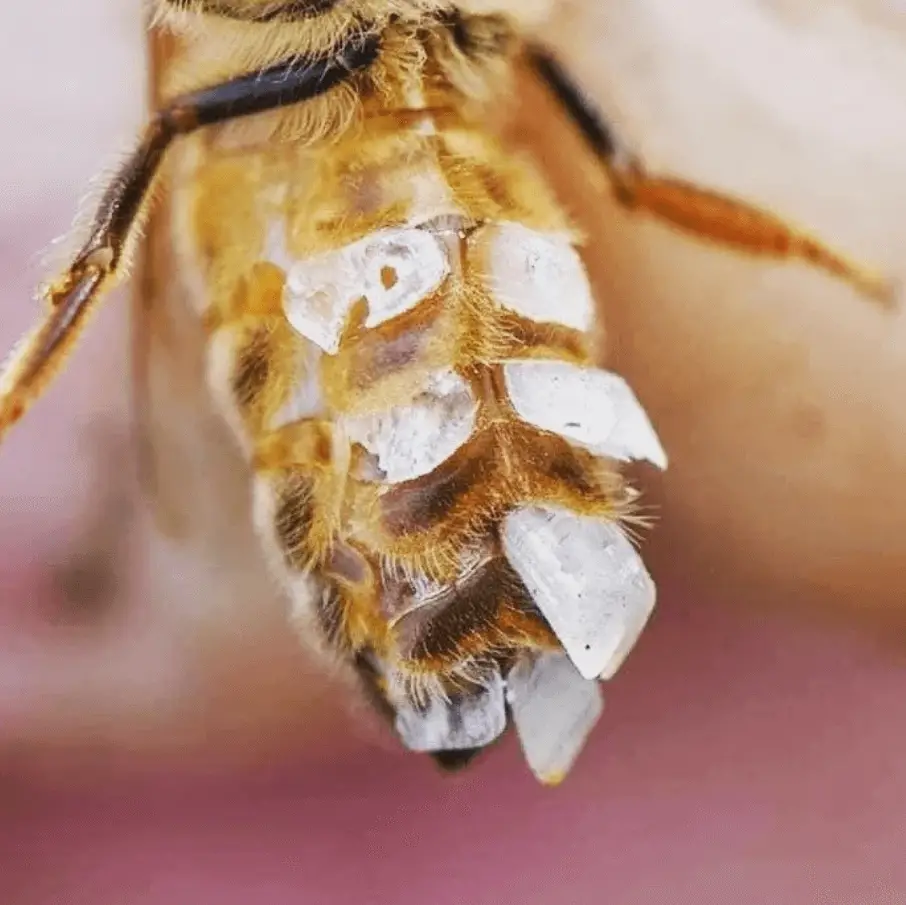
A bee producing flake-like wax pieces. Photo credits: The British Beekeepers Association
The bees chew and process the wax flakes with saliva and other enzymes to produce the honeycomb1.
Colonies need a lot of time and energy for the wax building process: To produce 1 kg of wax, bees “burn” roughly 4-10 kg of honey during spring and early summer, which is the typical honeycomb building period.
Therefore, some beekeepers use pre-pressed honeycombs for their hives, which saves a little time and energy for their bees. Other beekeepers prefer providing only the frames.
The color of beeswax
When you think of honeycombs you probably have wax in a dark yellowish color in mind.
Guess what, the wax was not that yellow in the beginning!
When bees build their own honeycombs the wax is white as snow! Only with the time, the wax becomes yellow, once the bees pressed pollen and nectar into the combs.
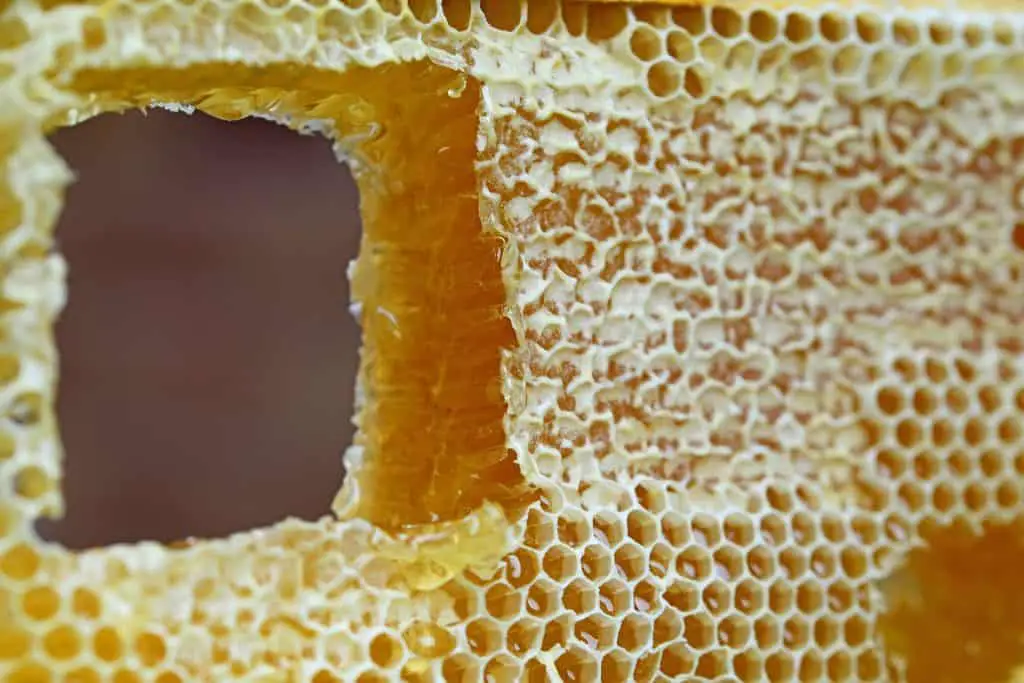
Beeswax

Pre-pressed honeycomb

